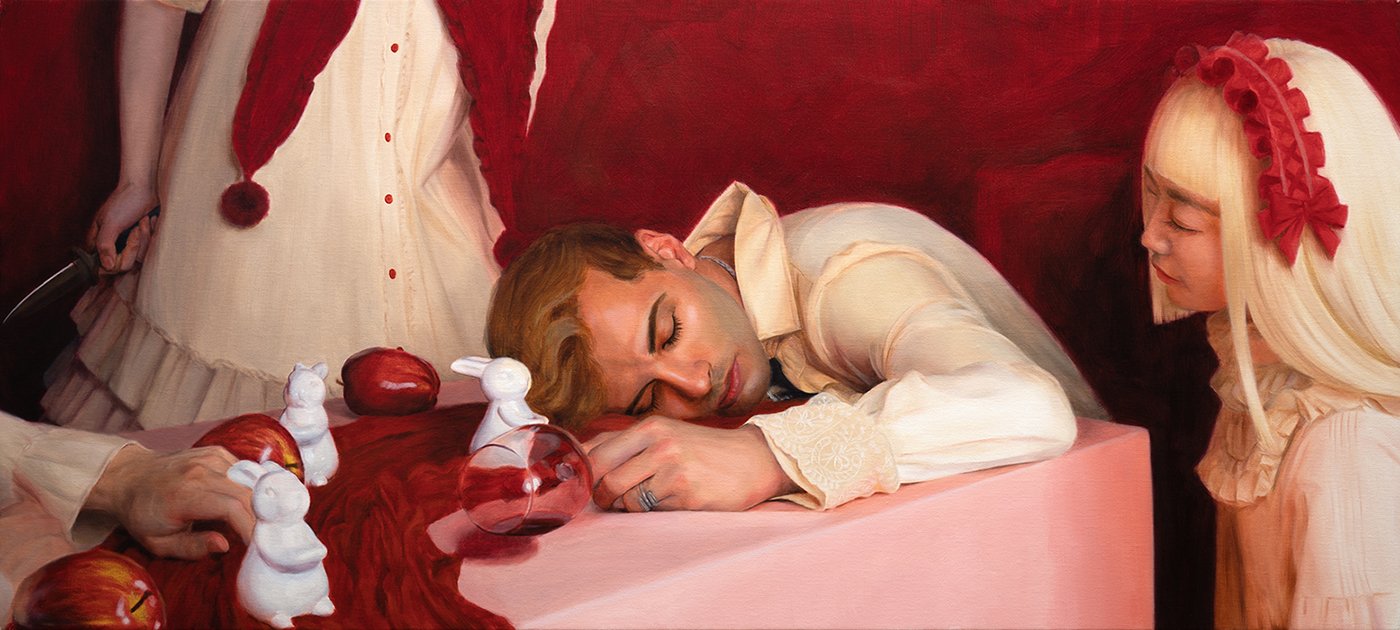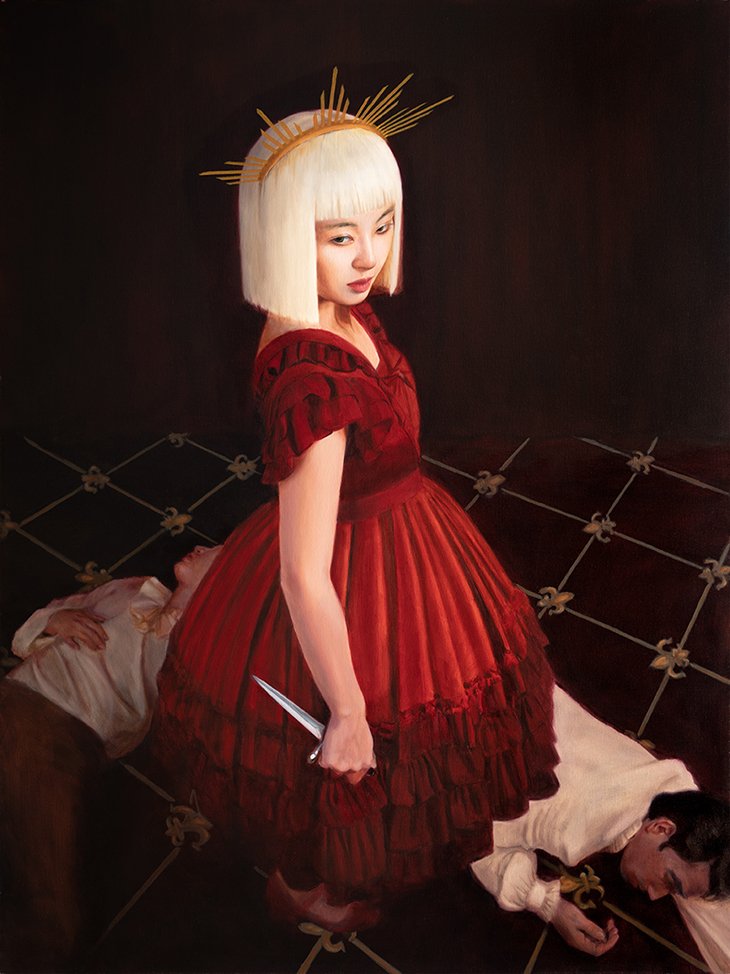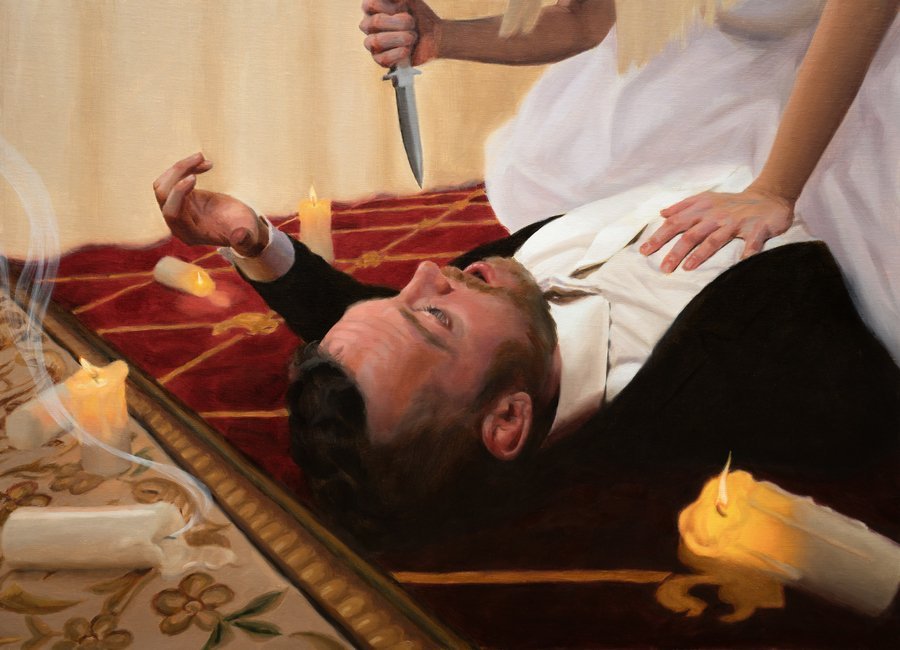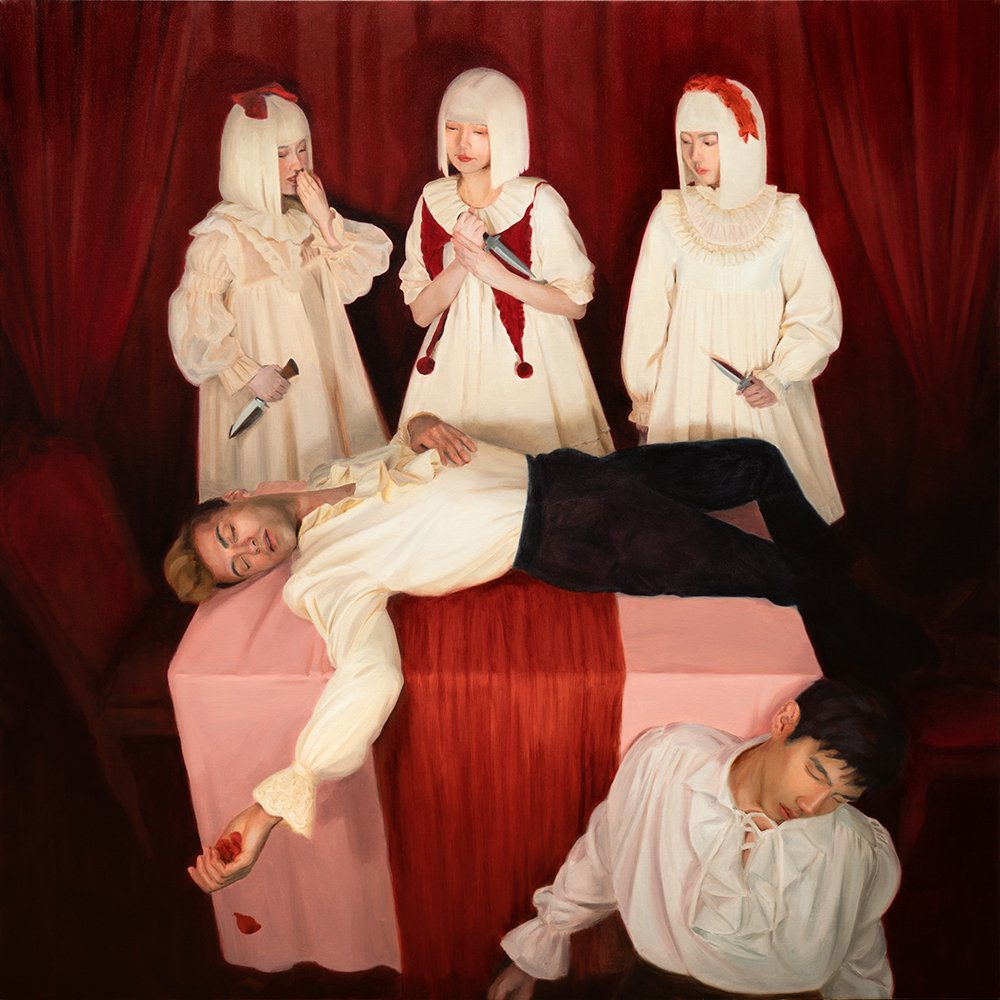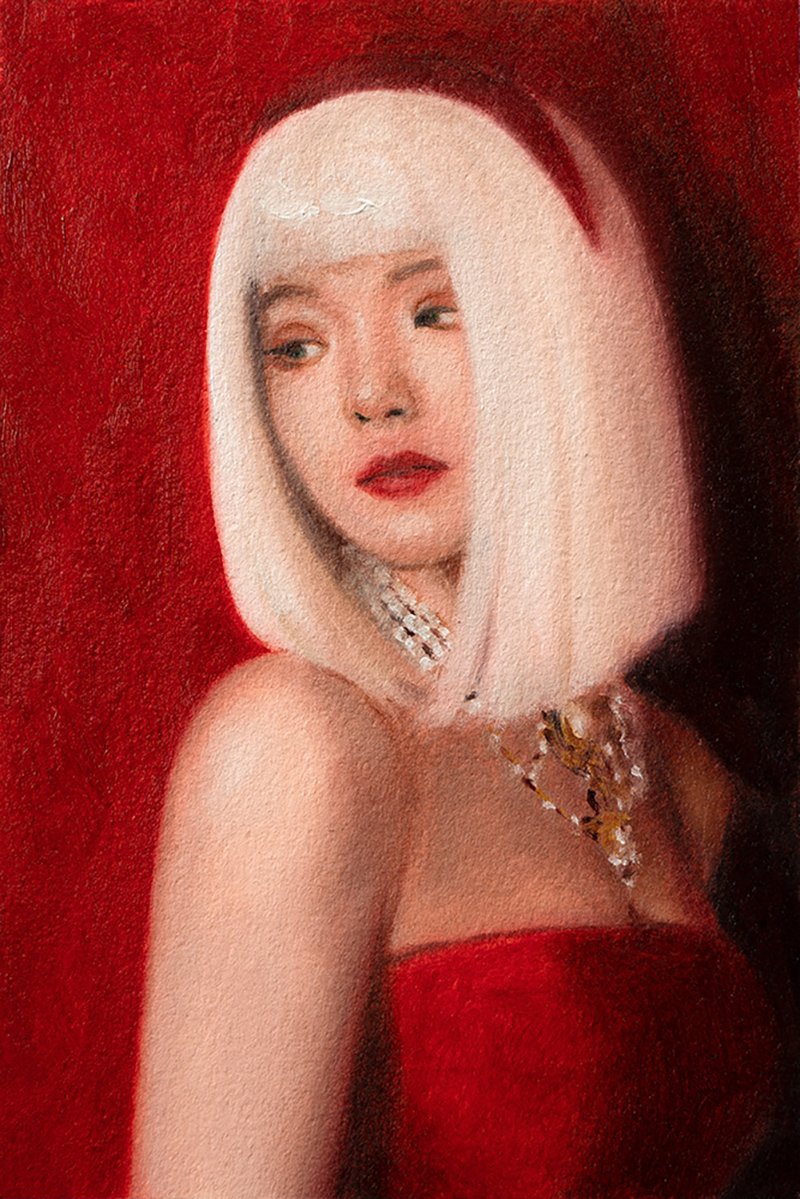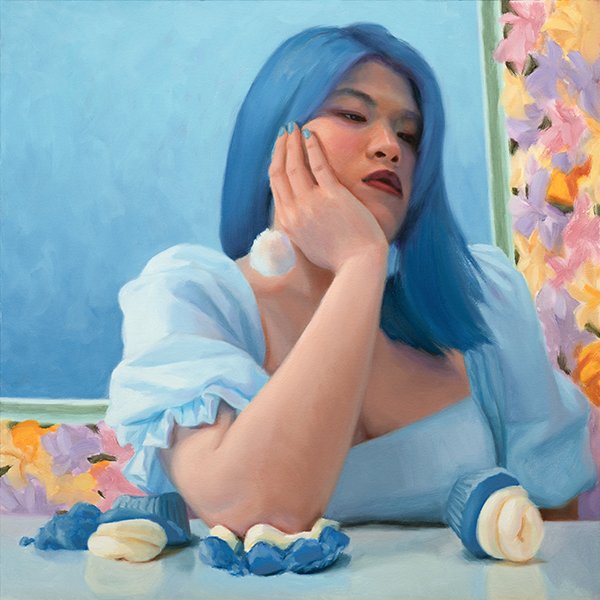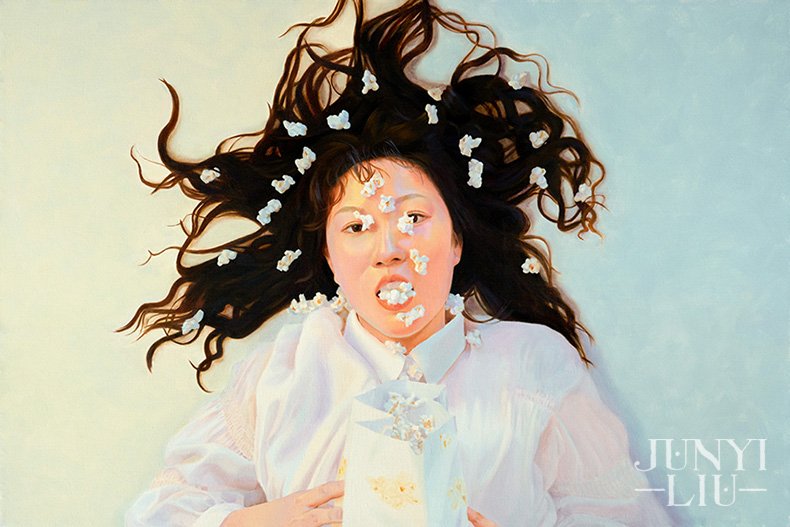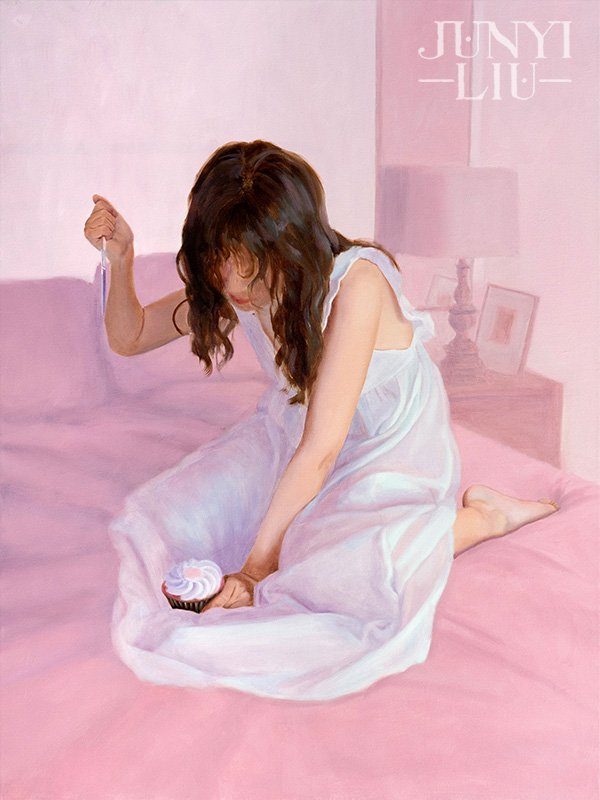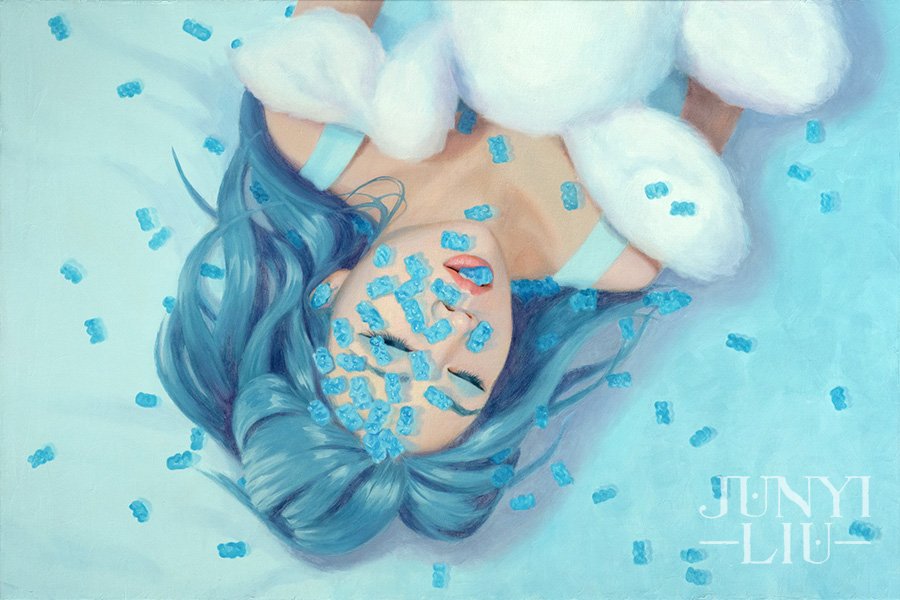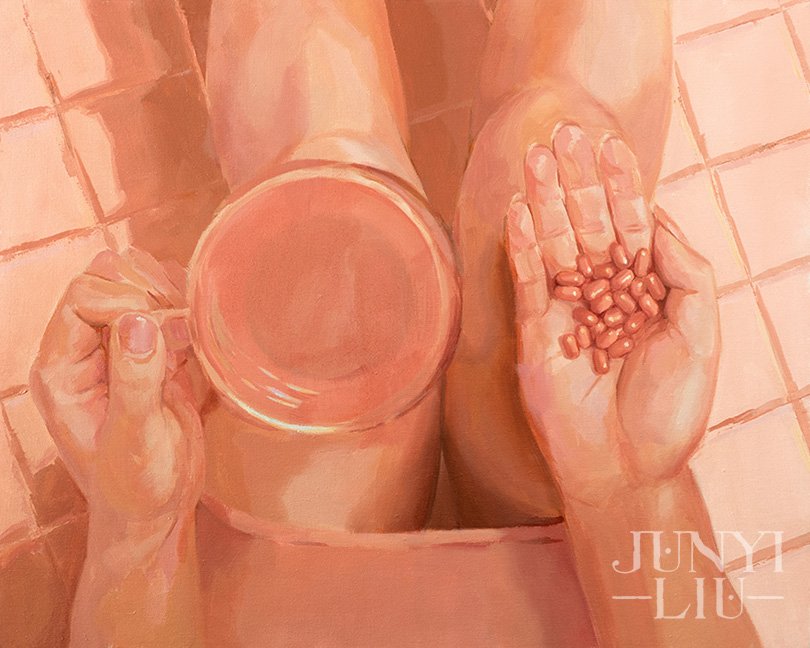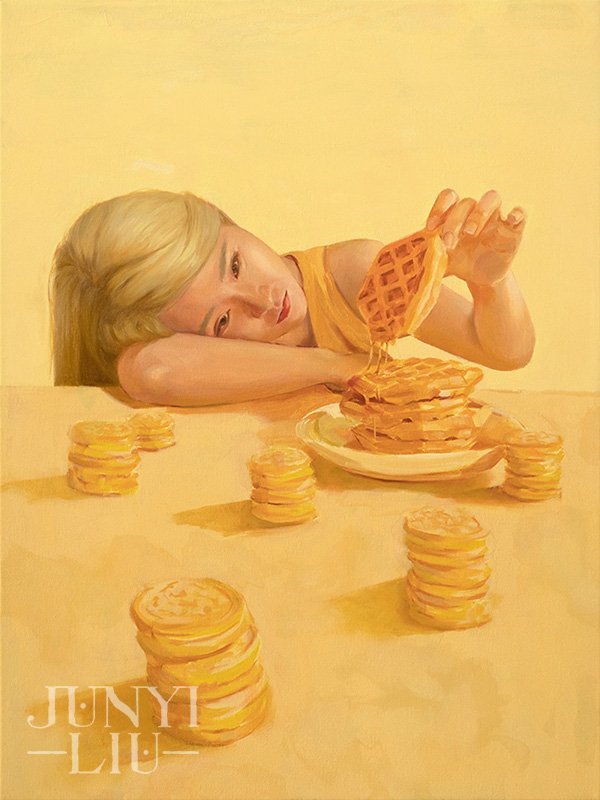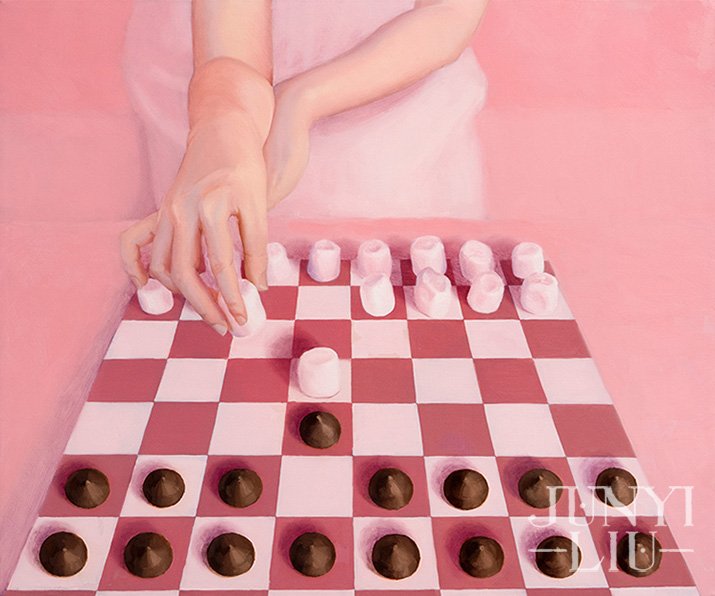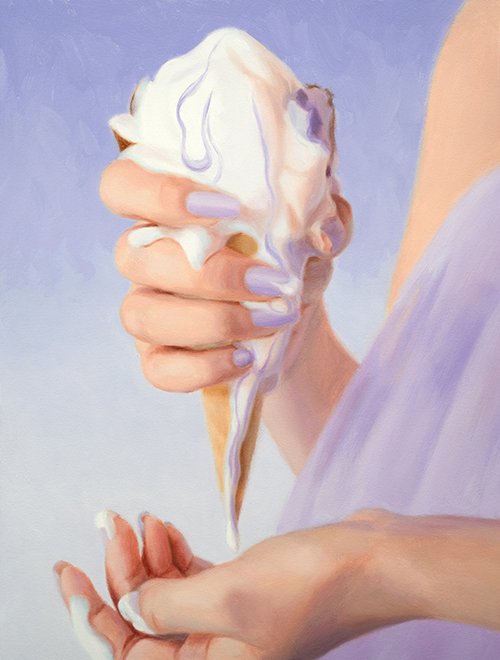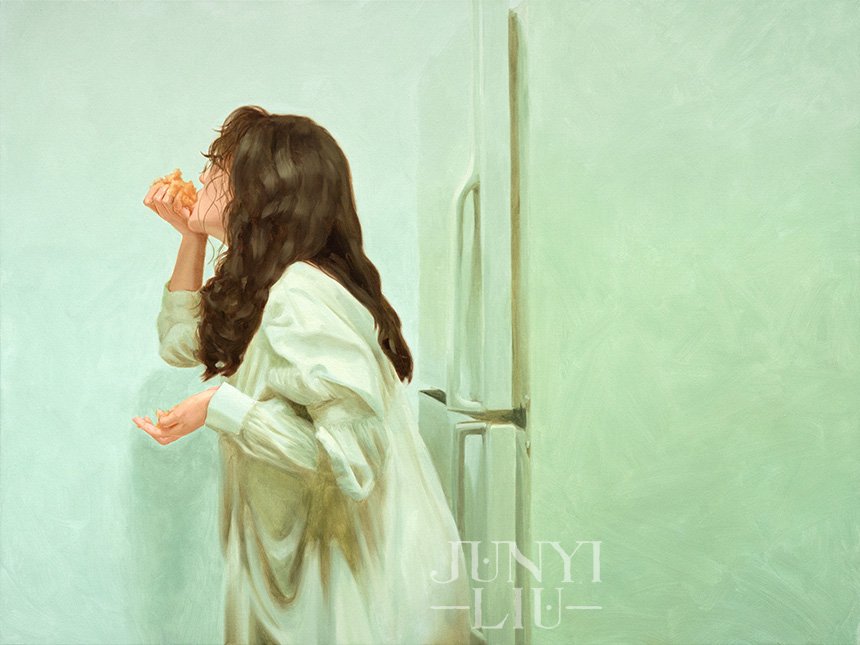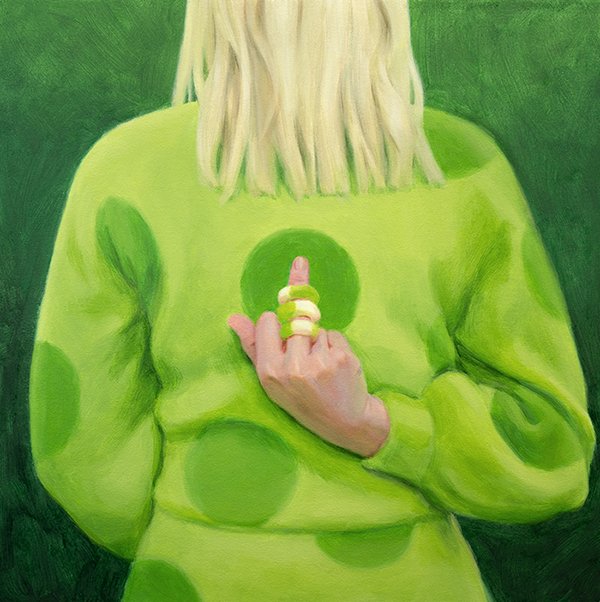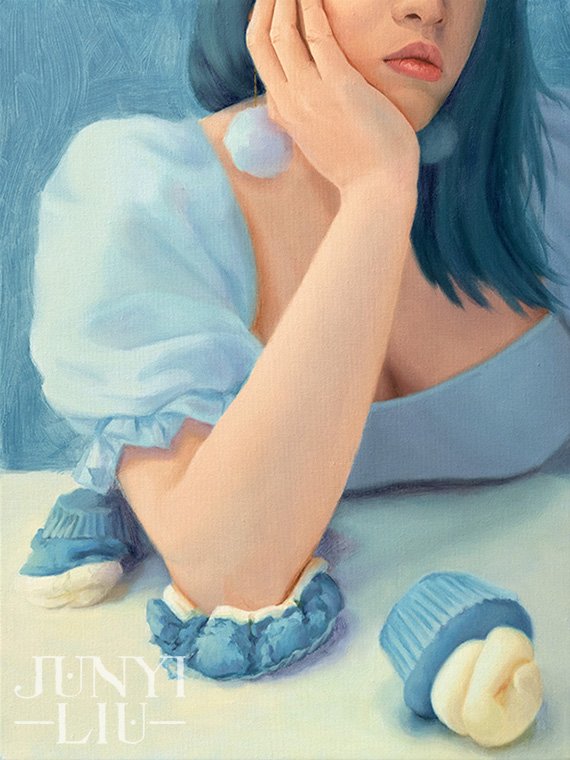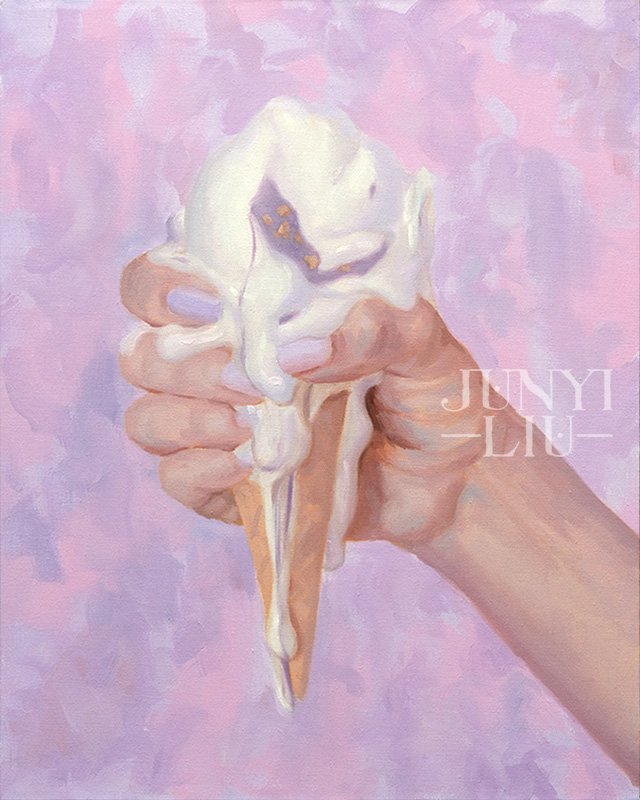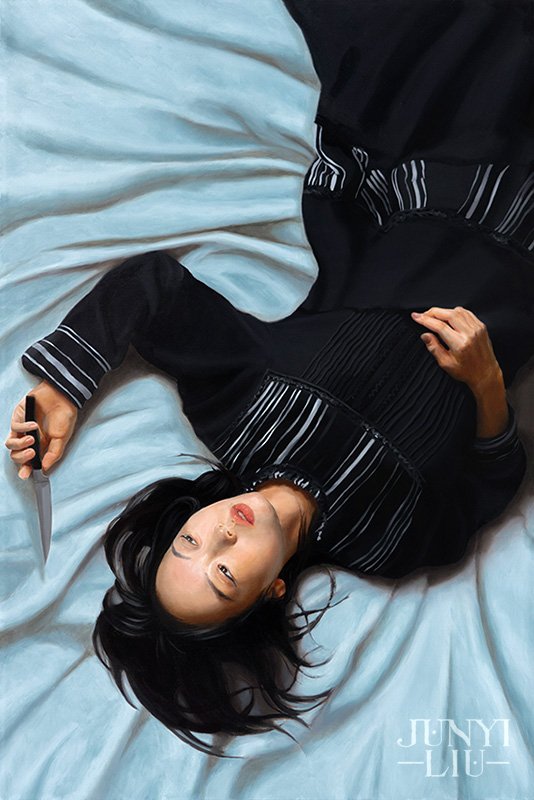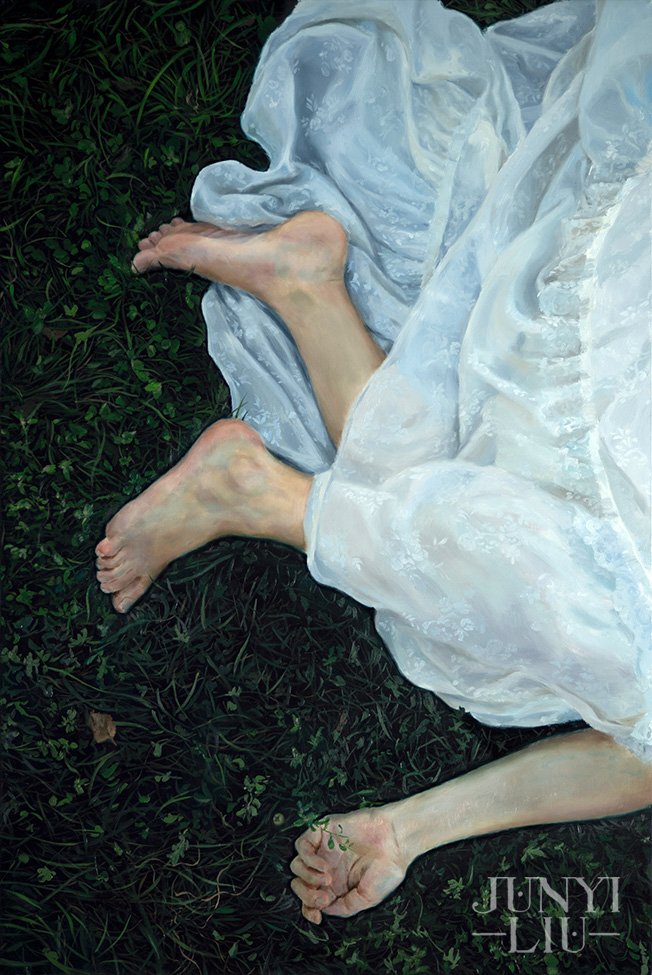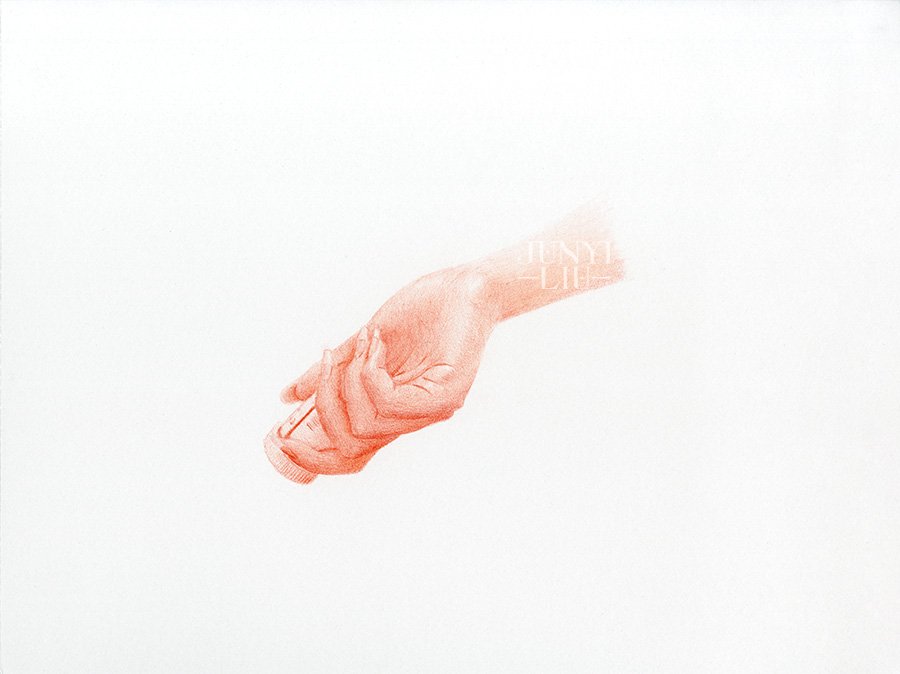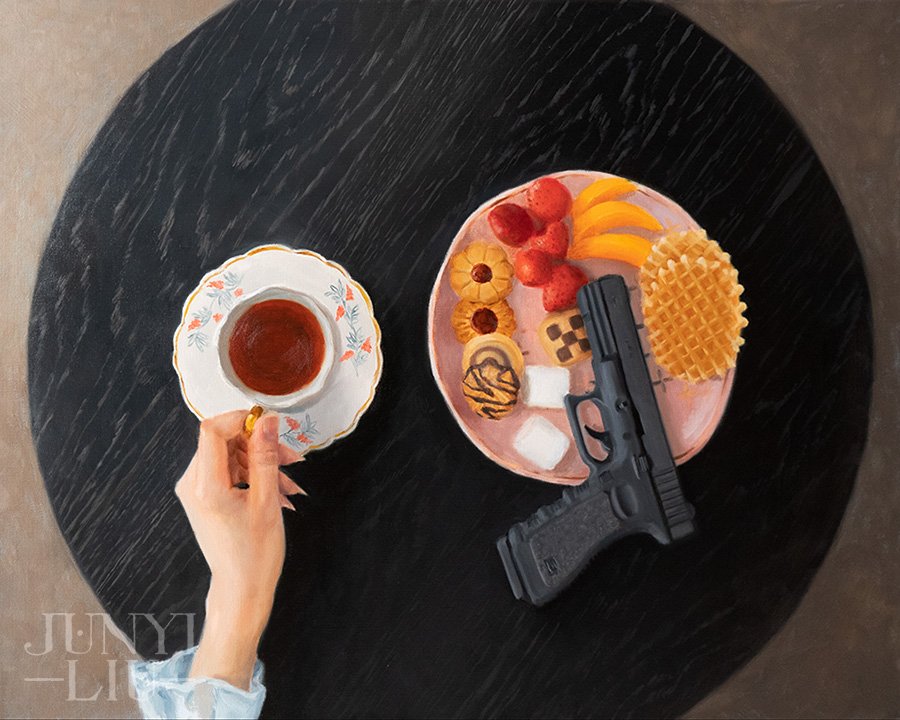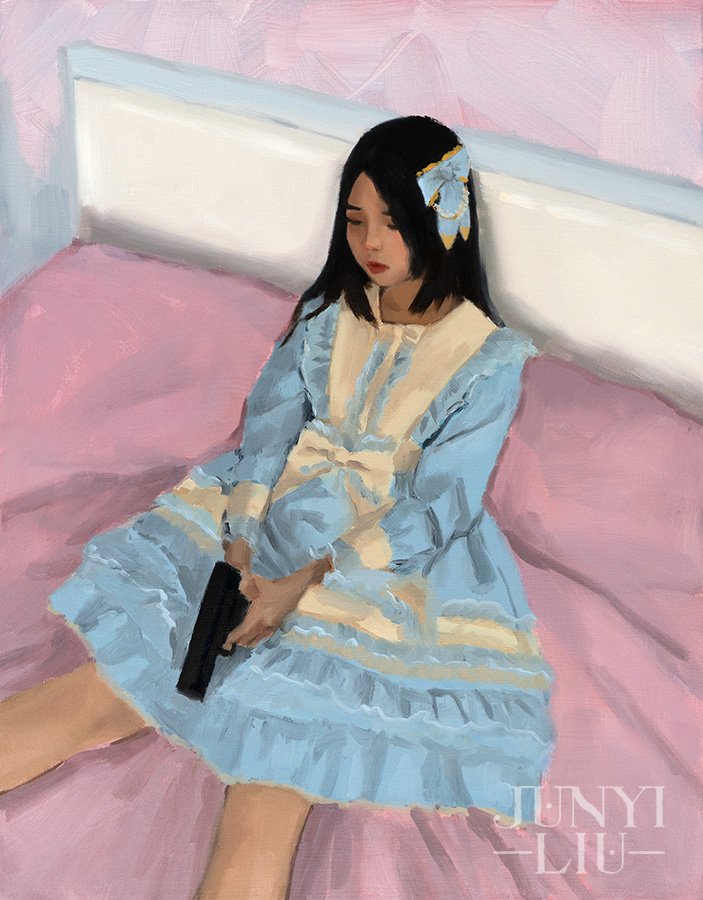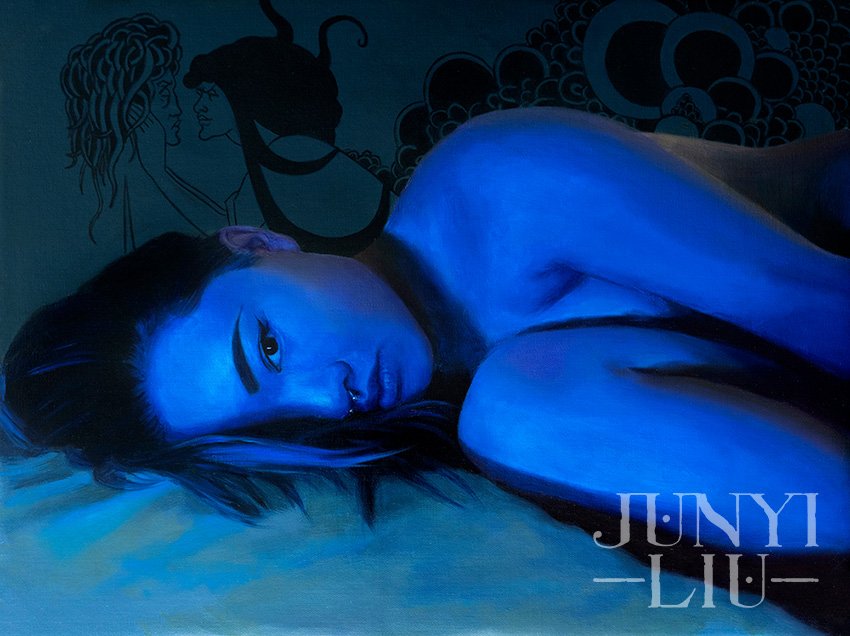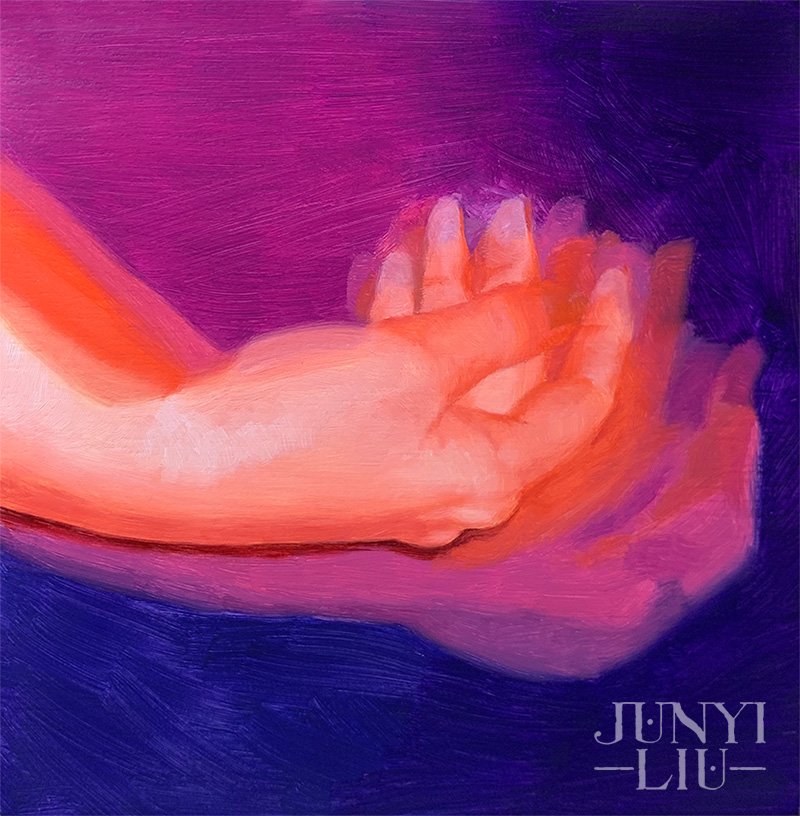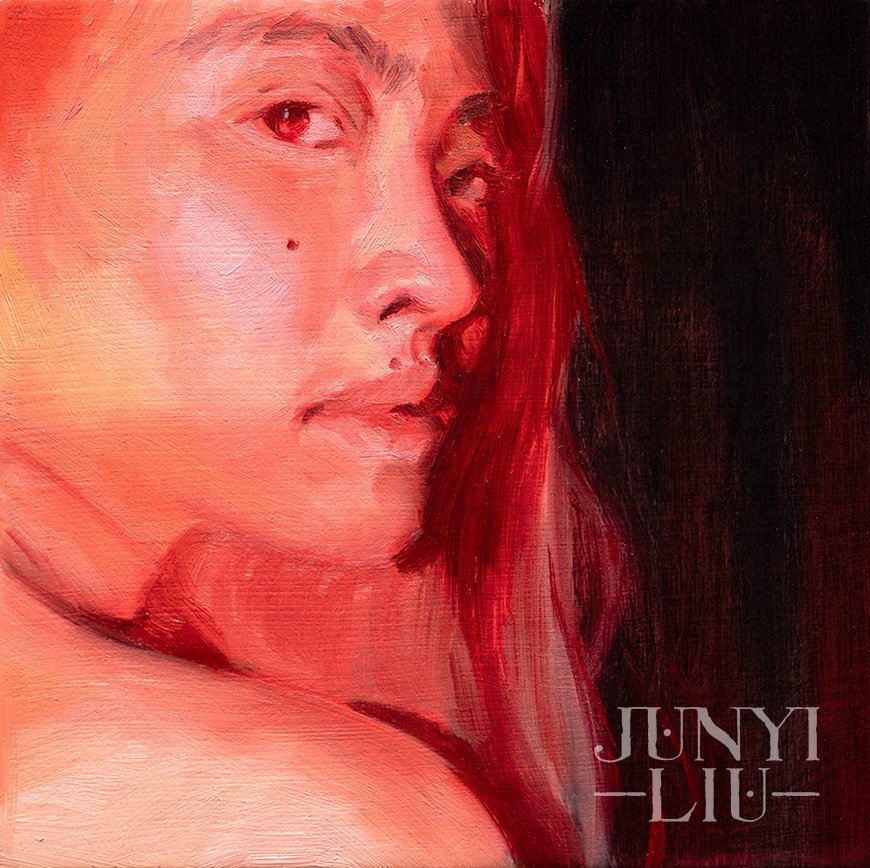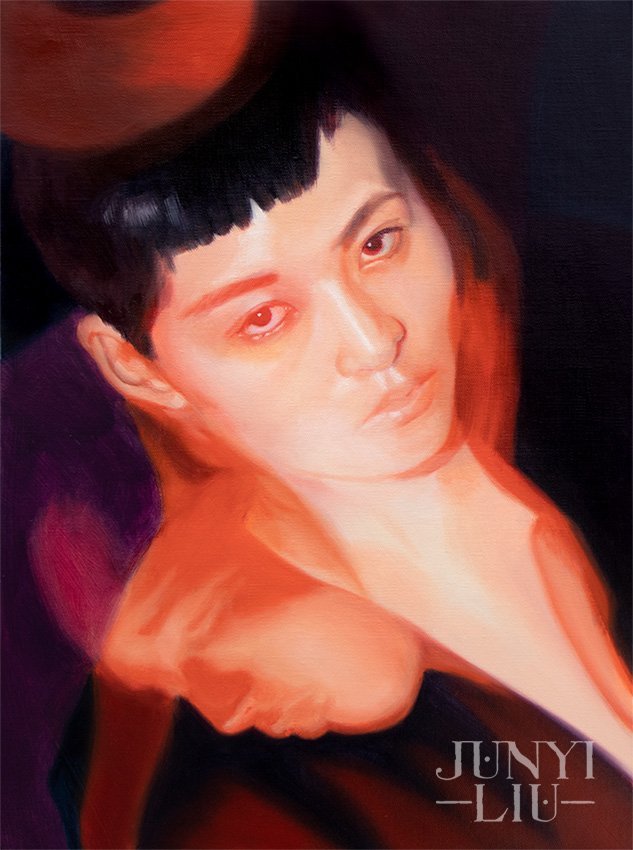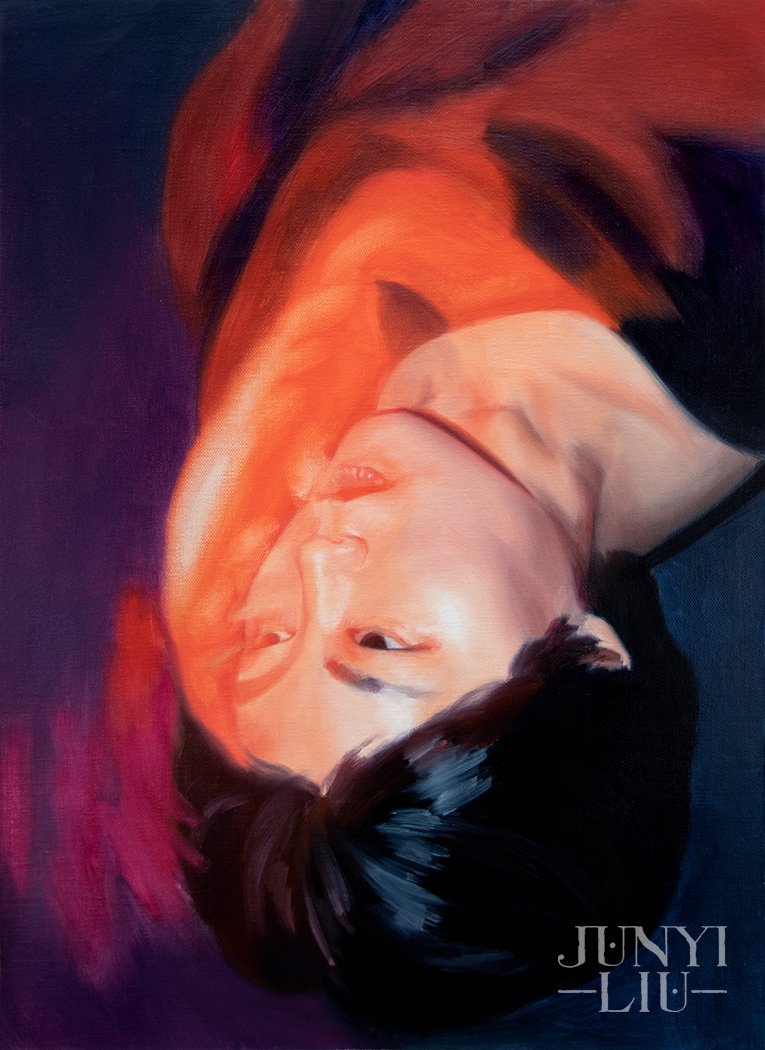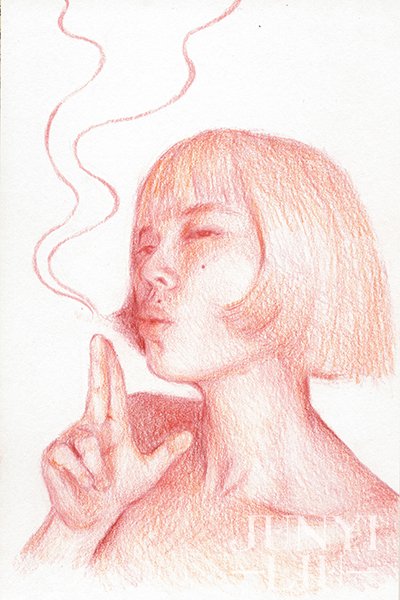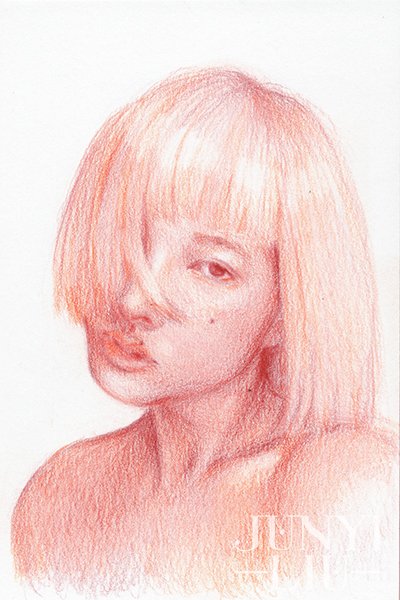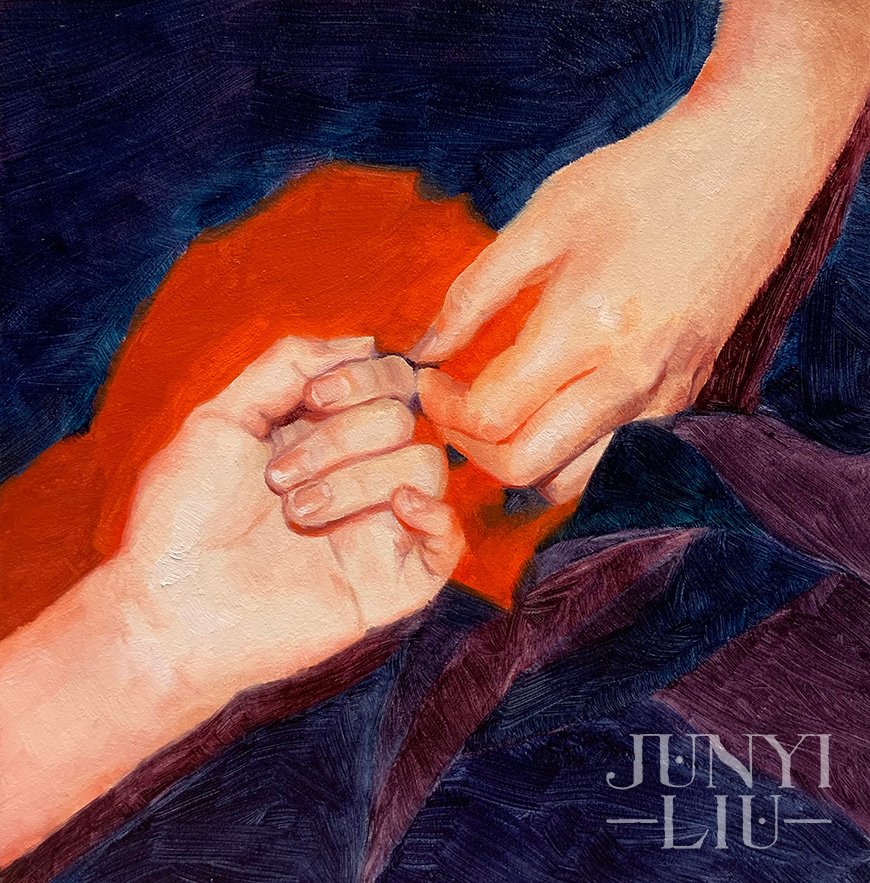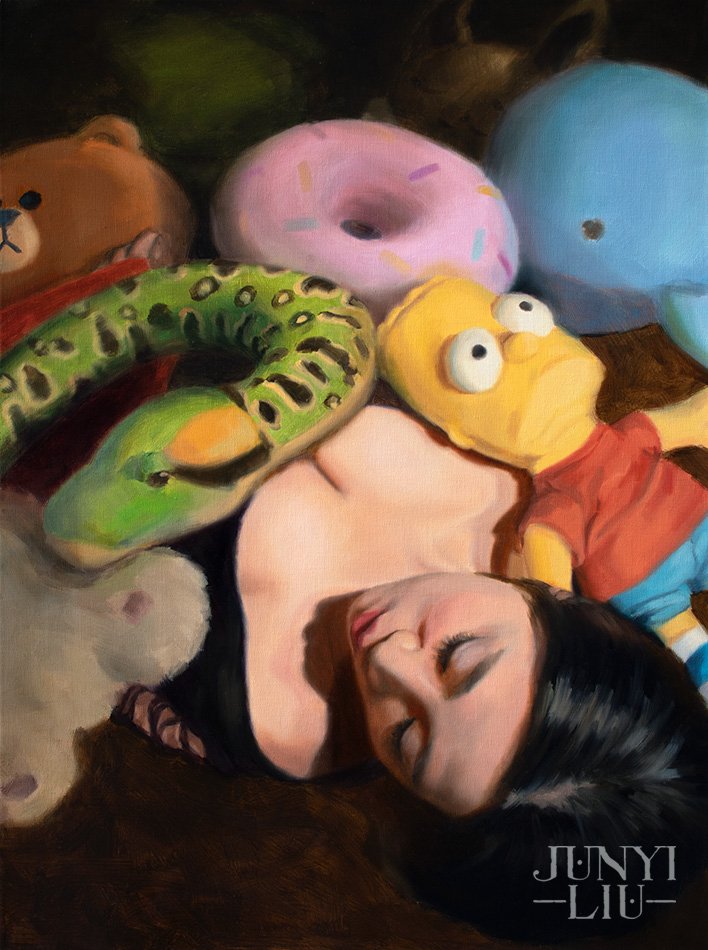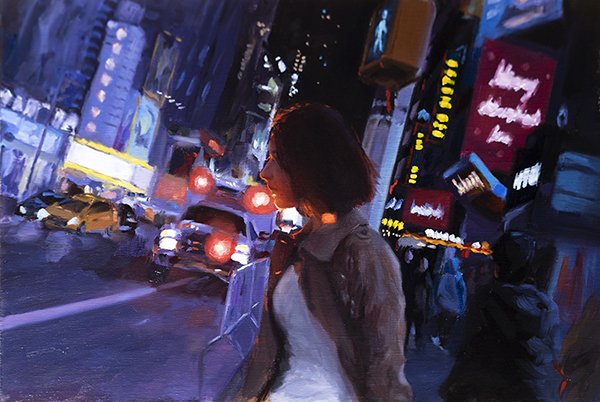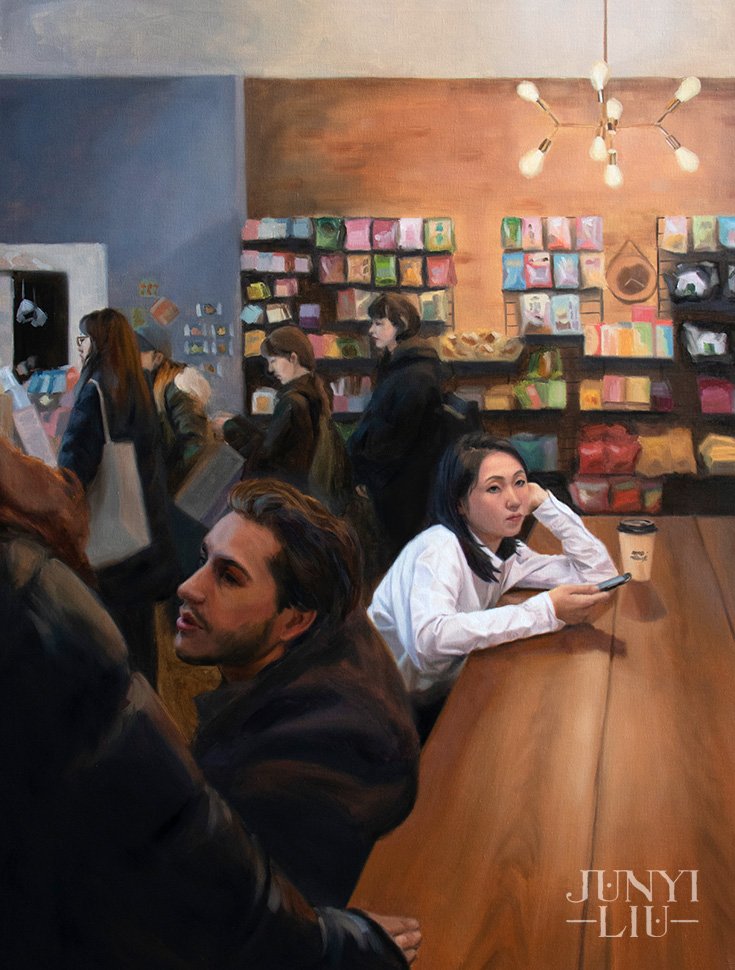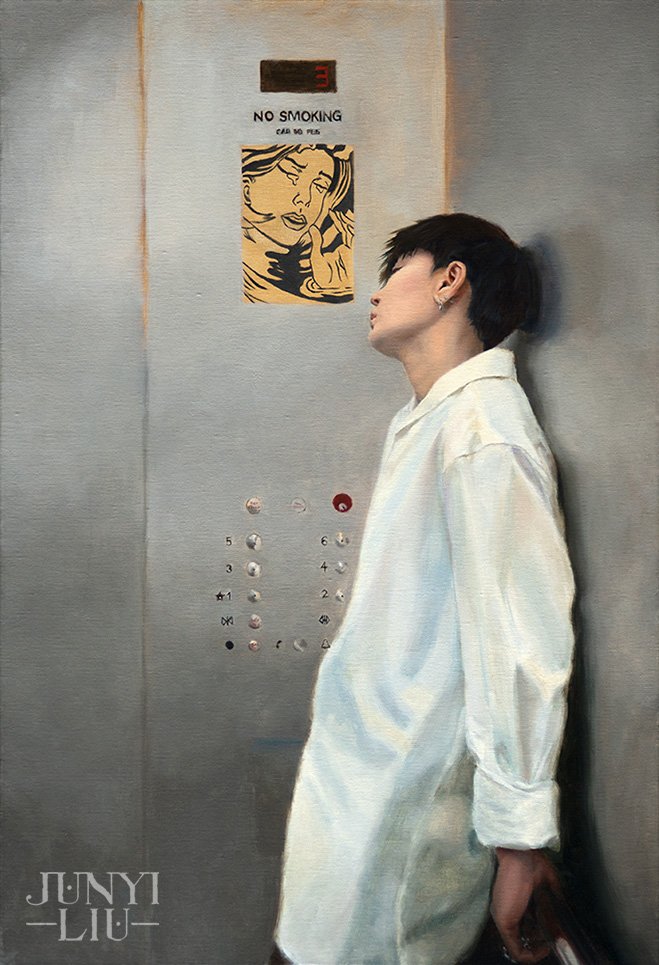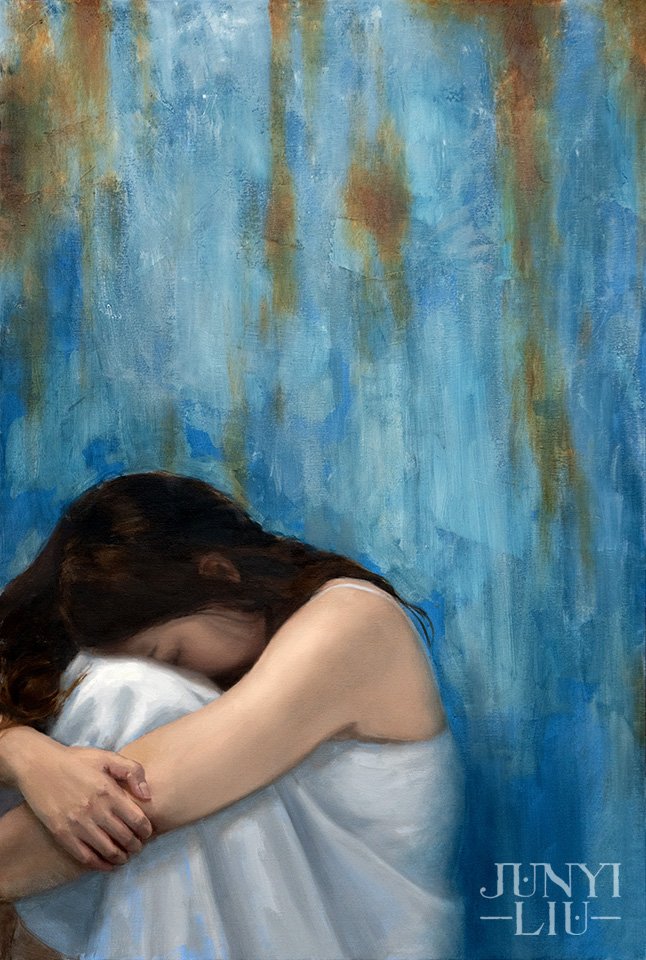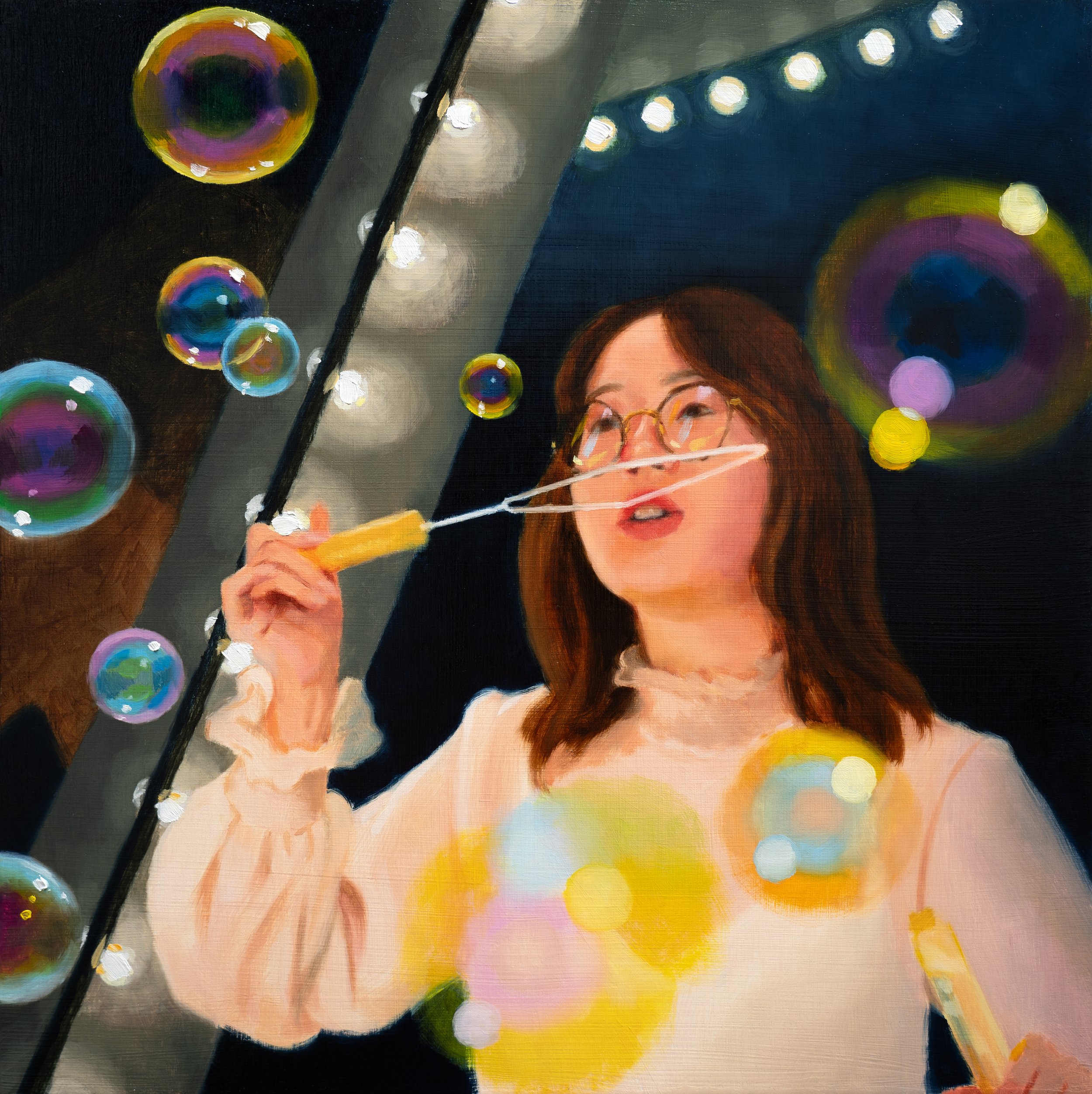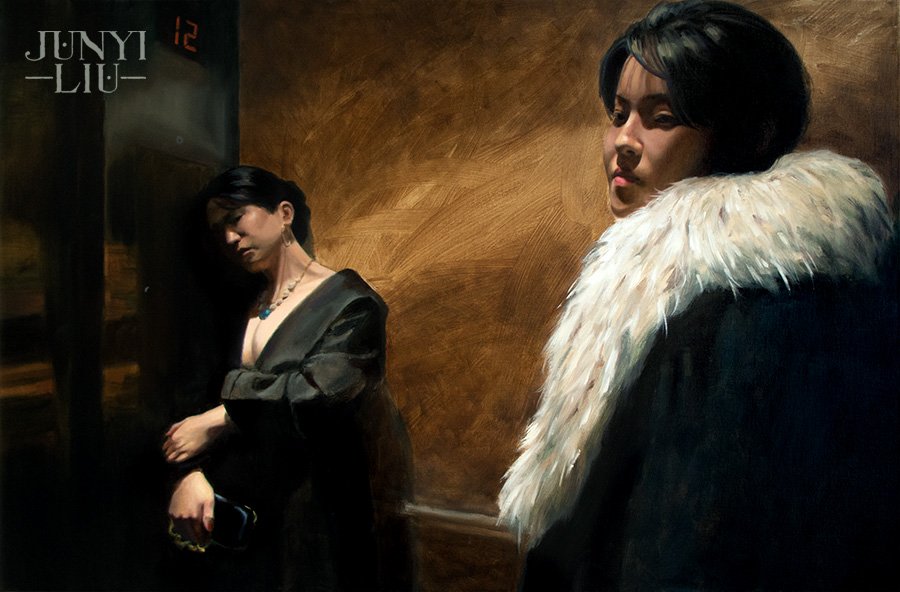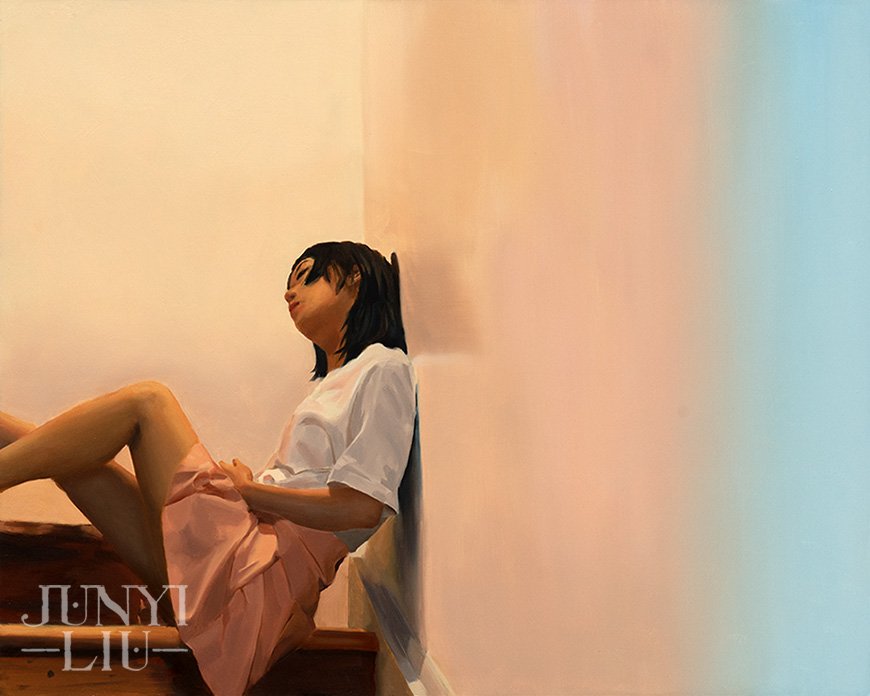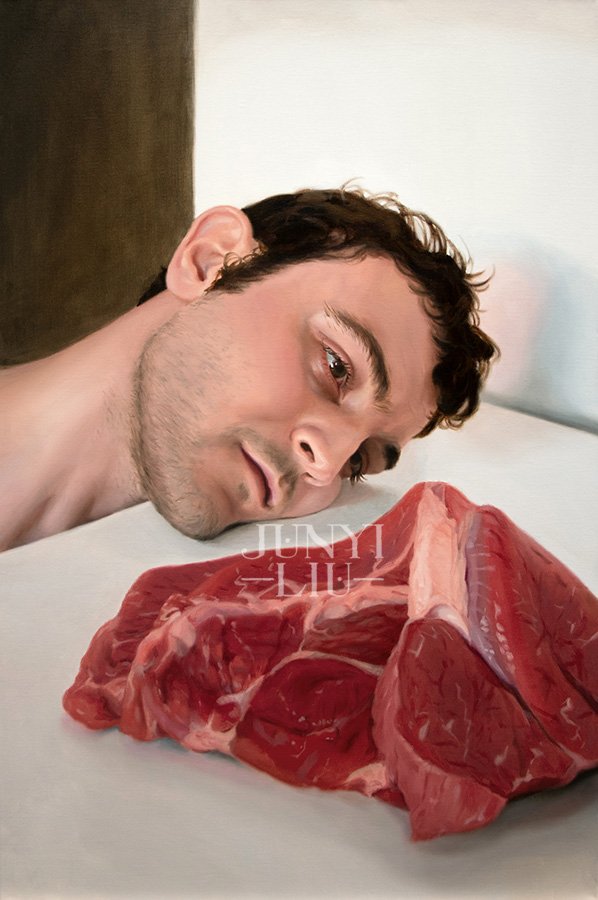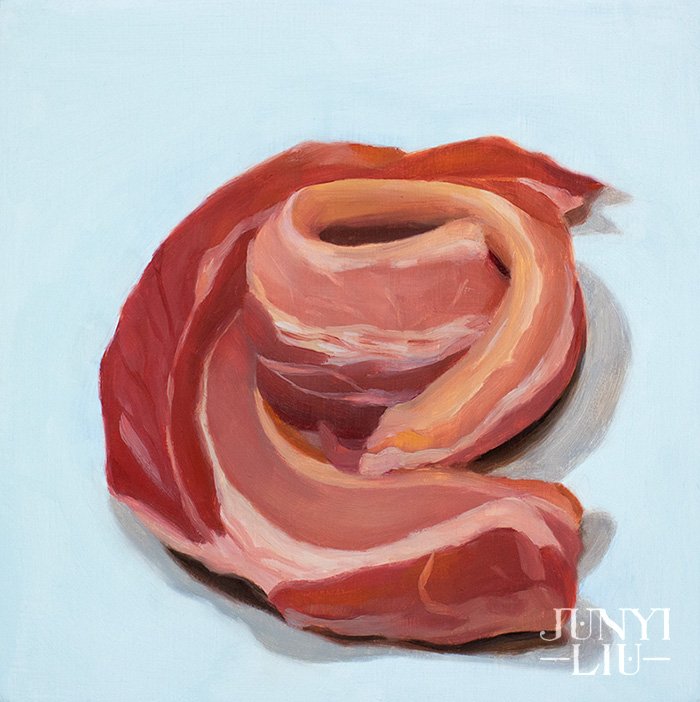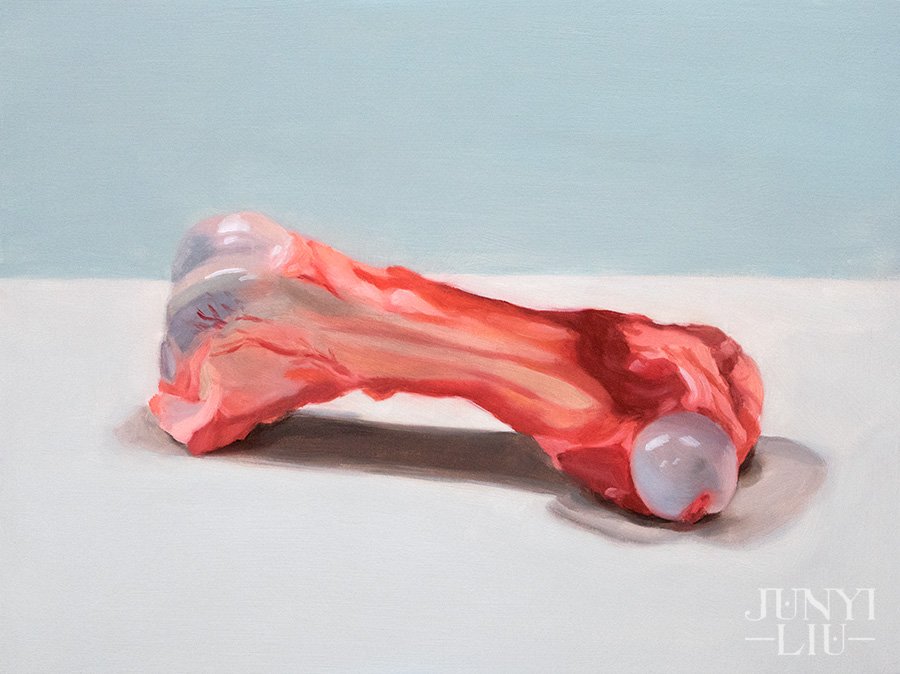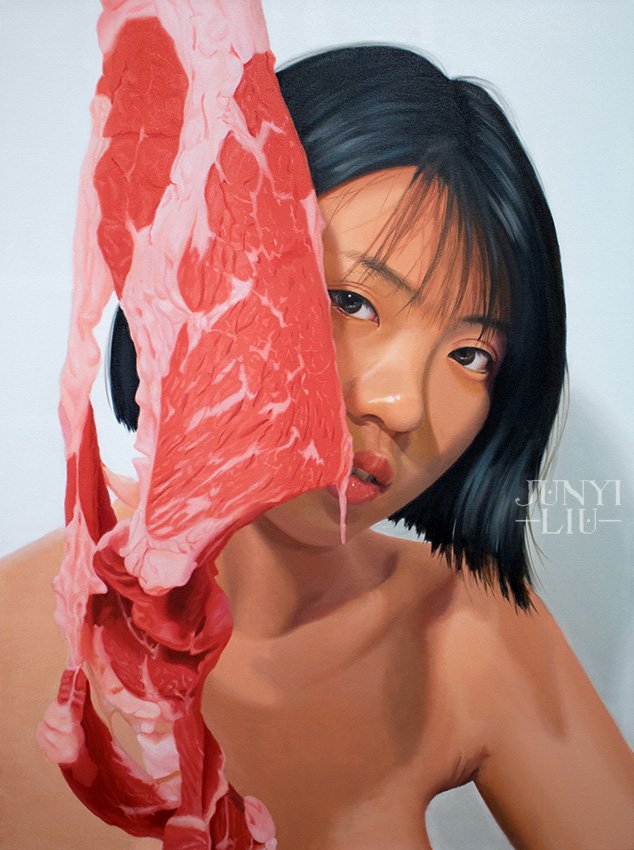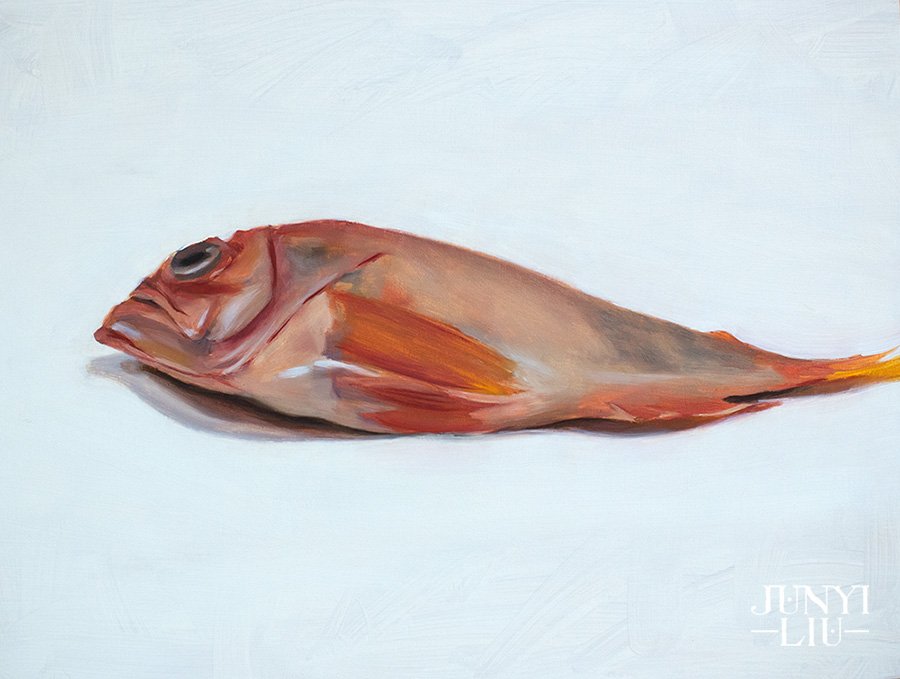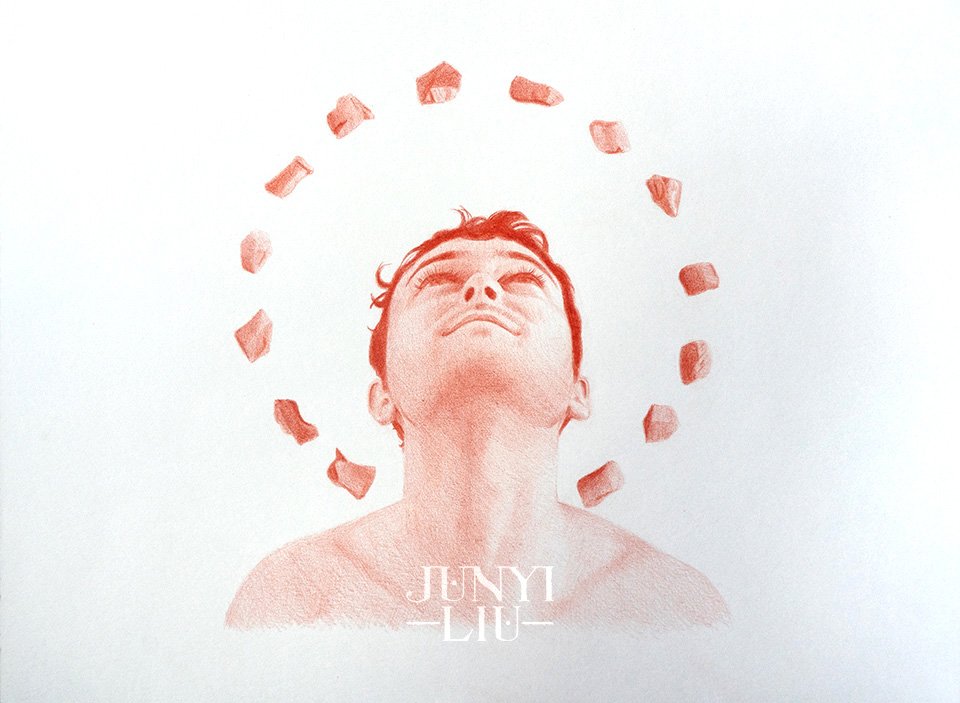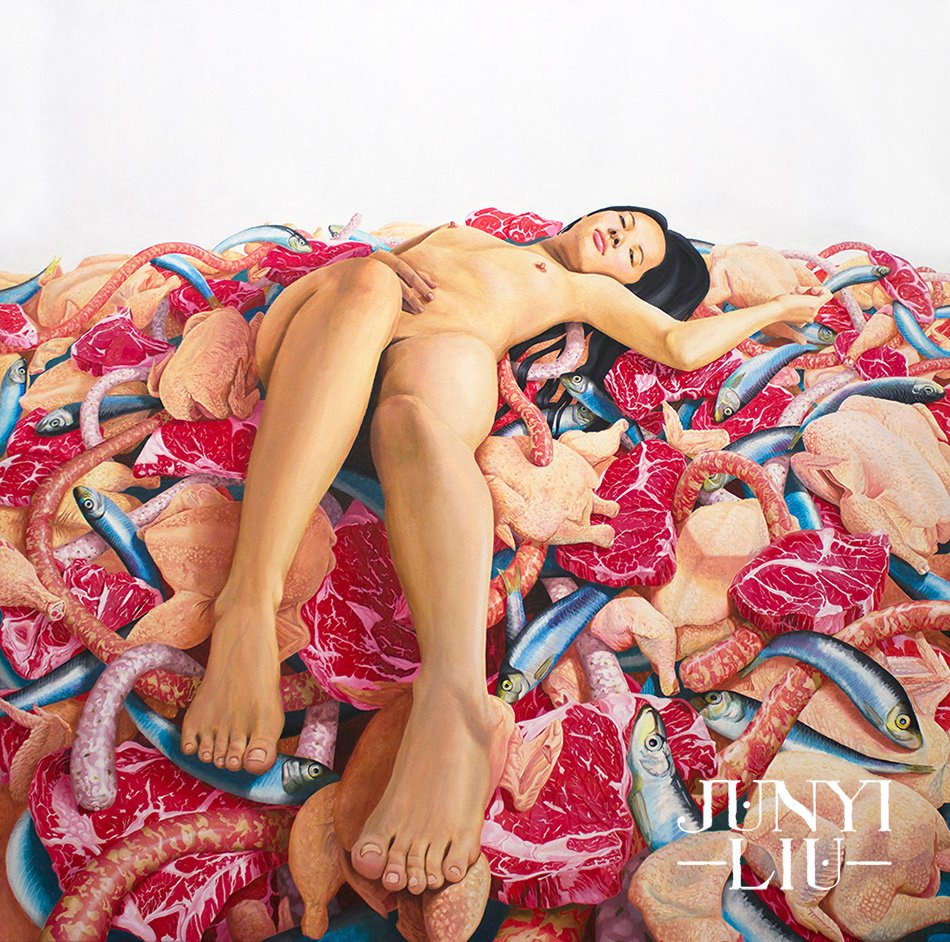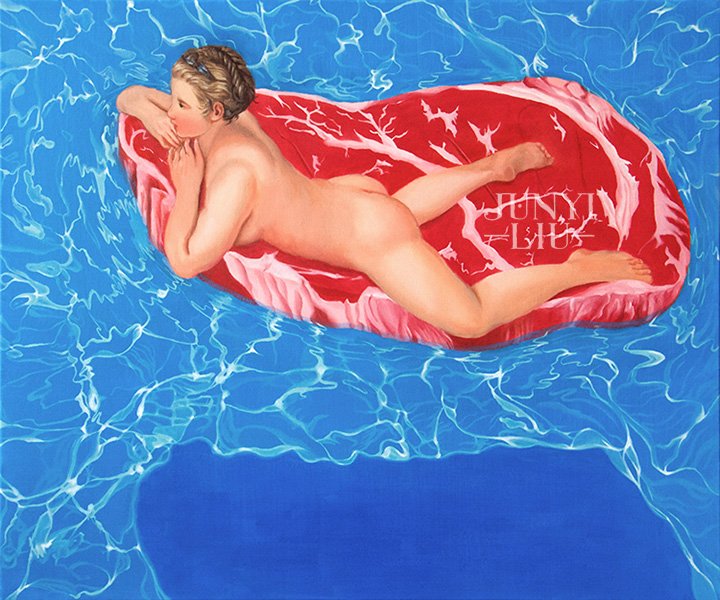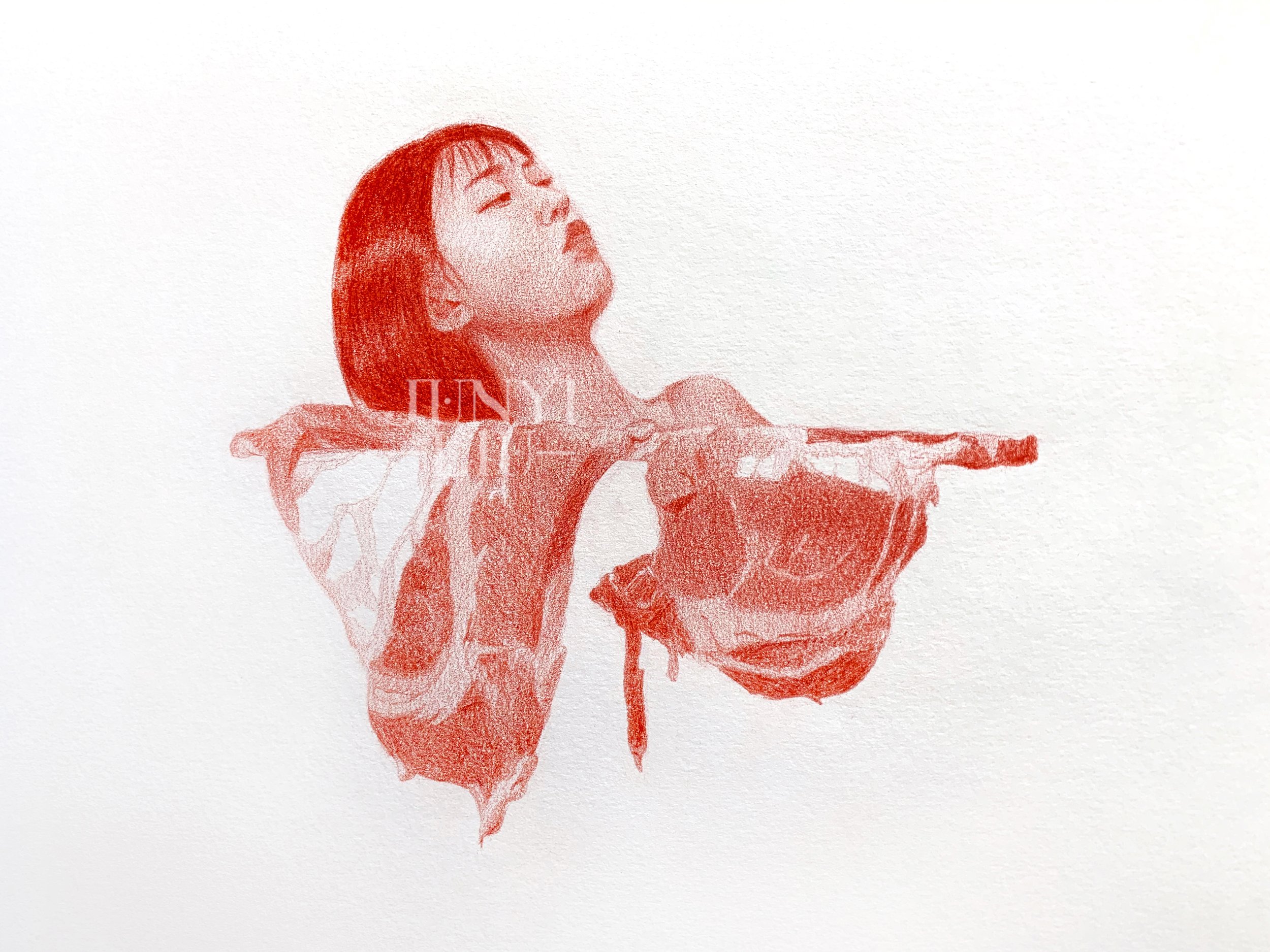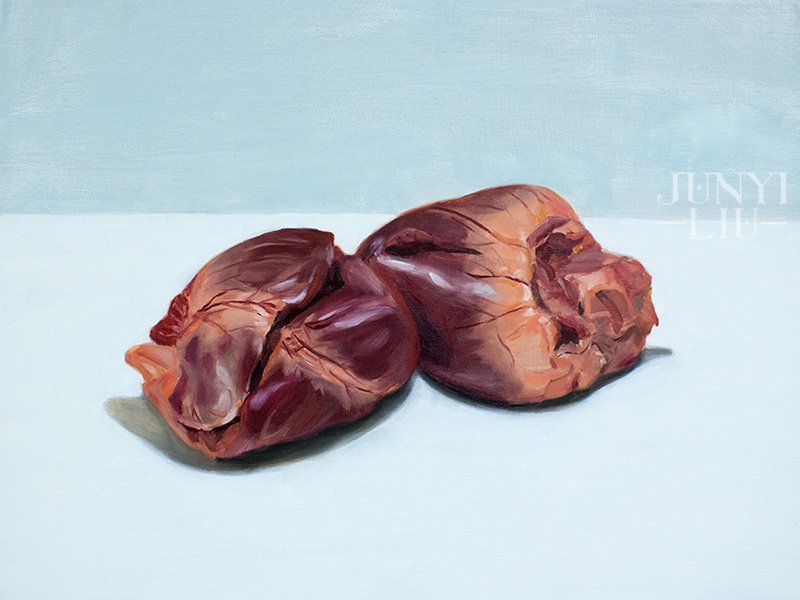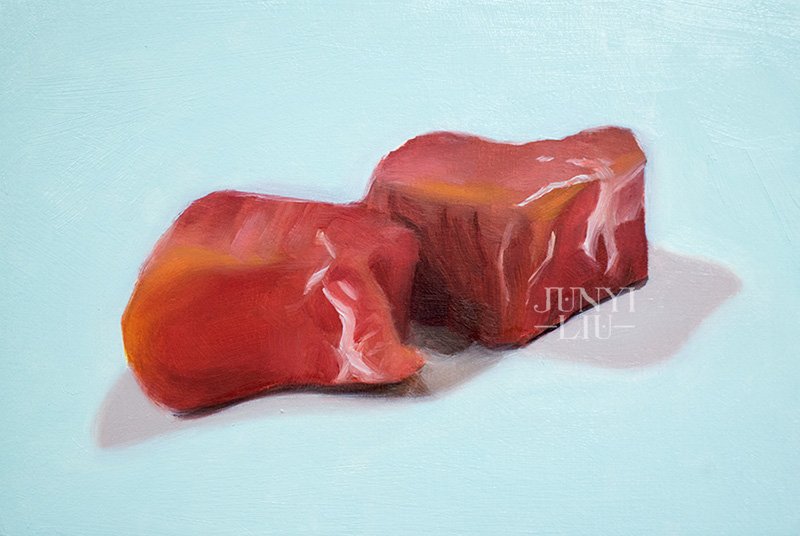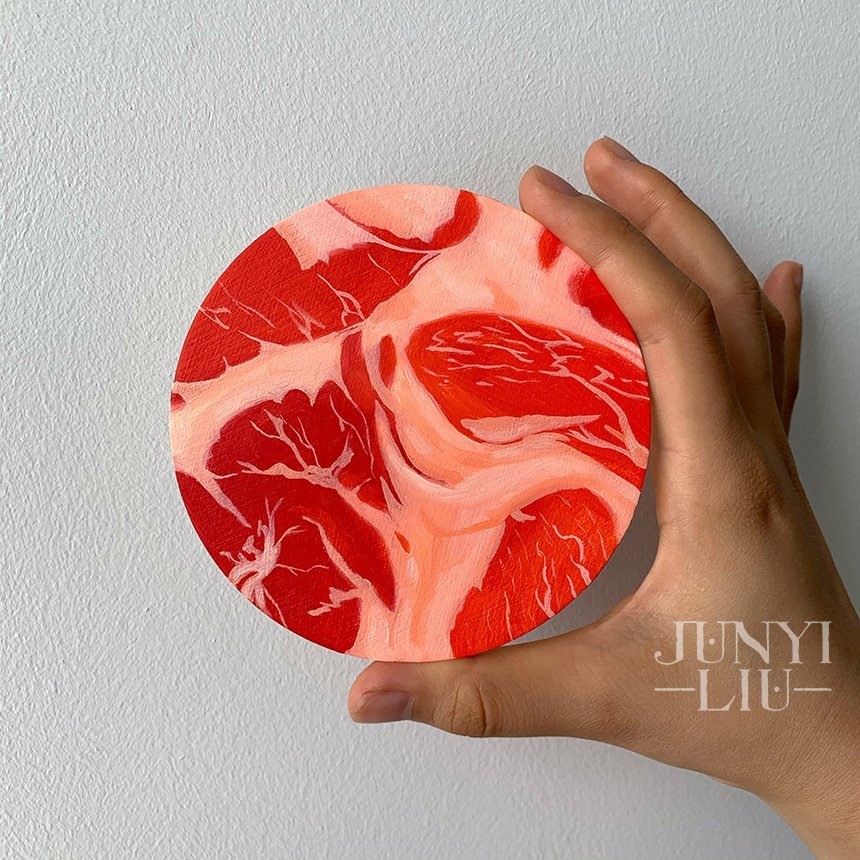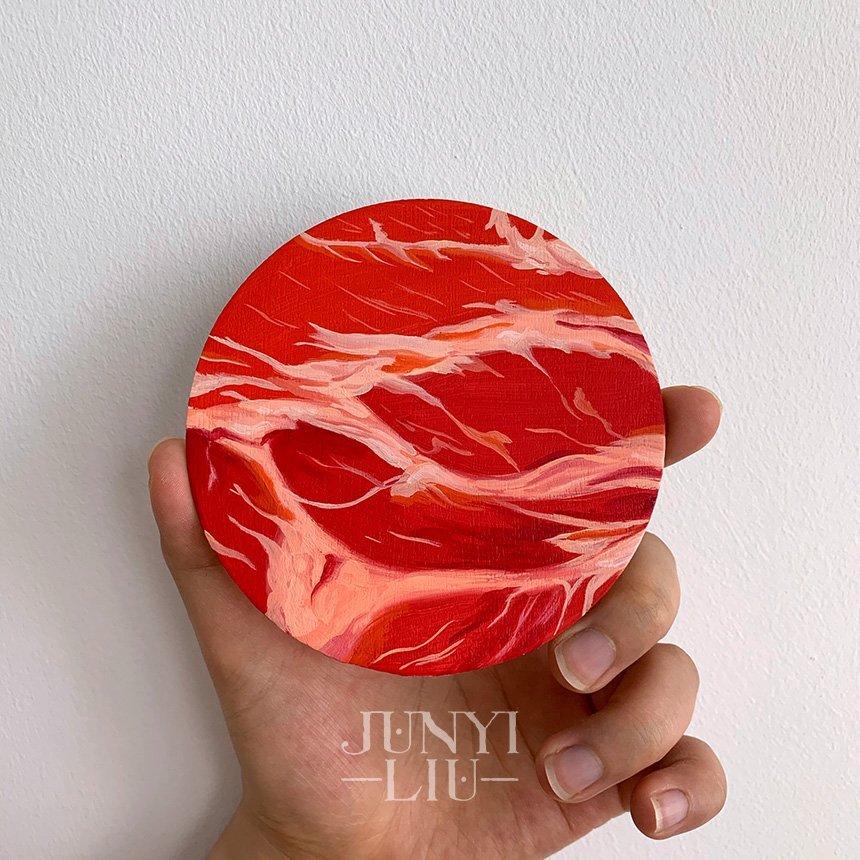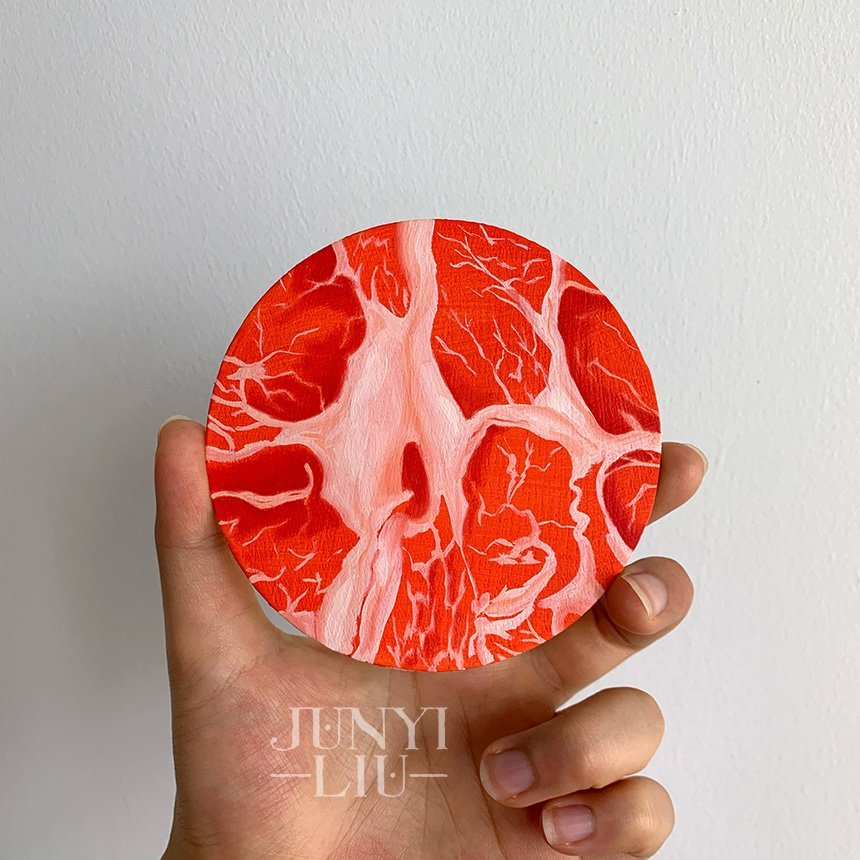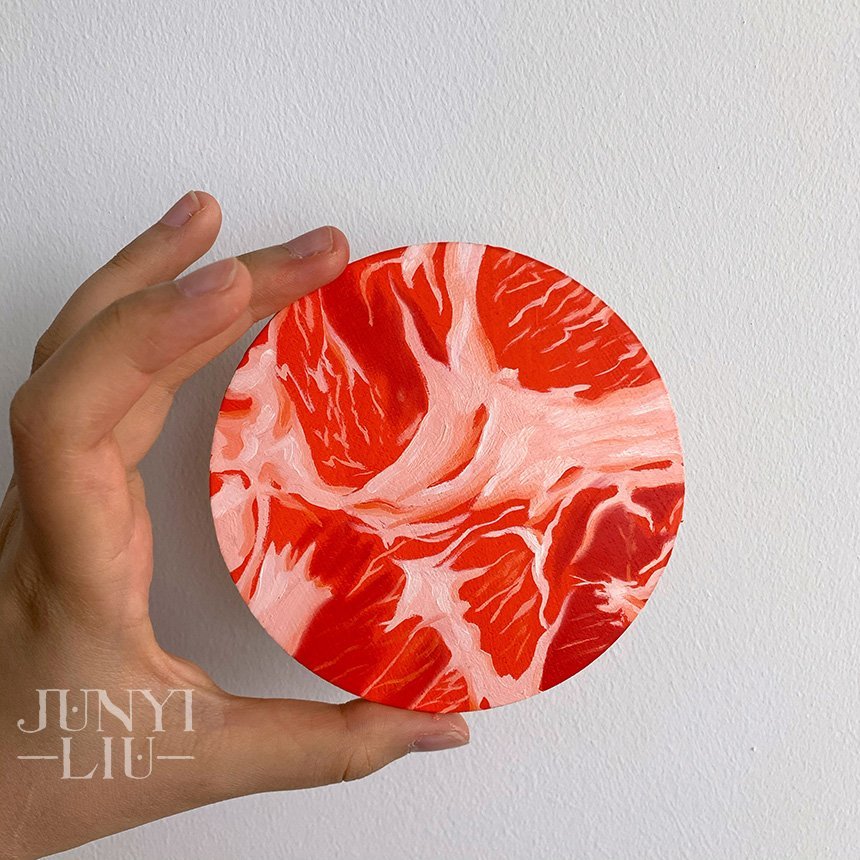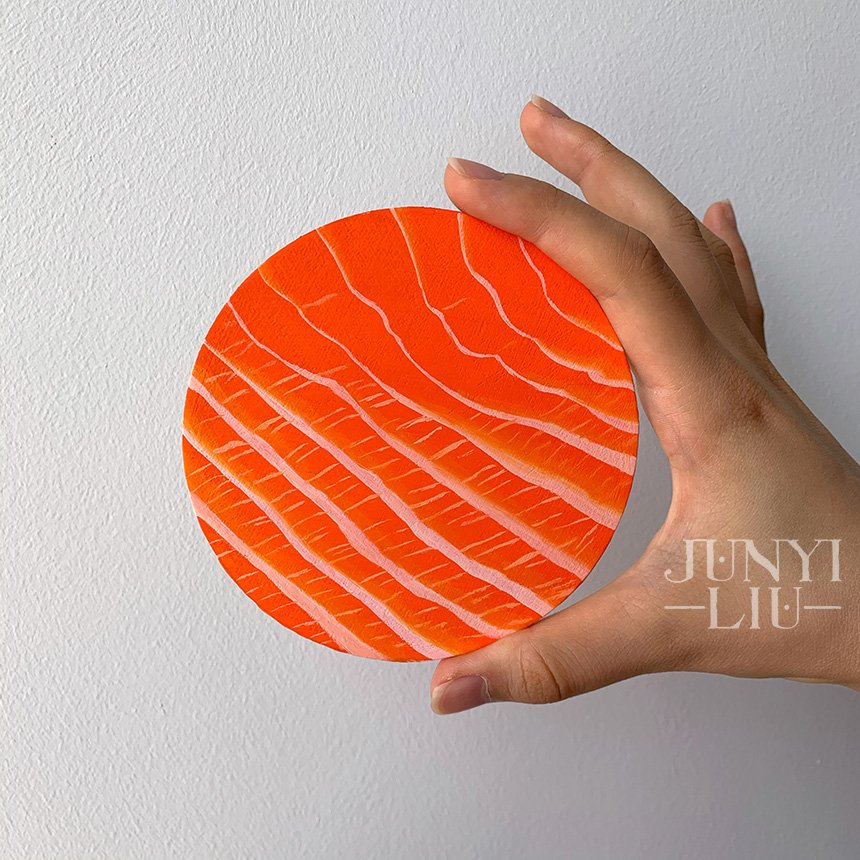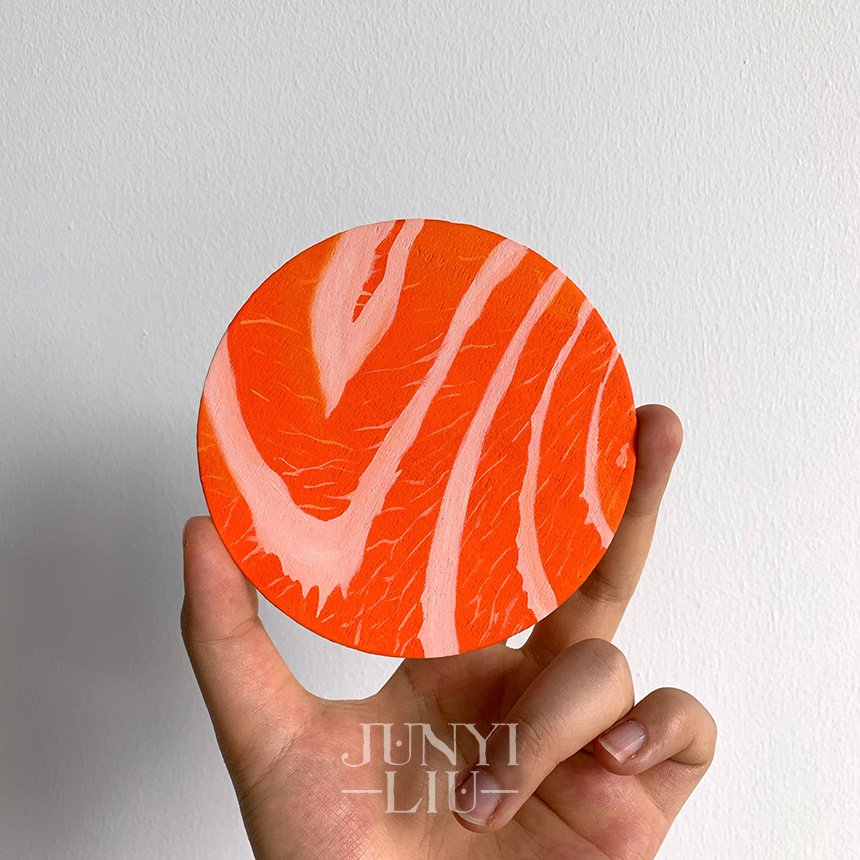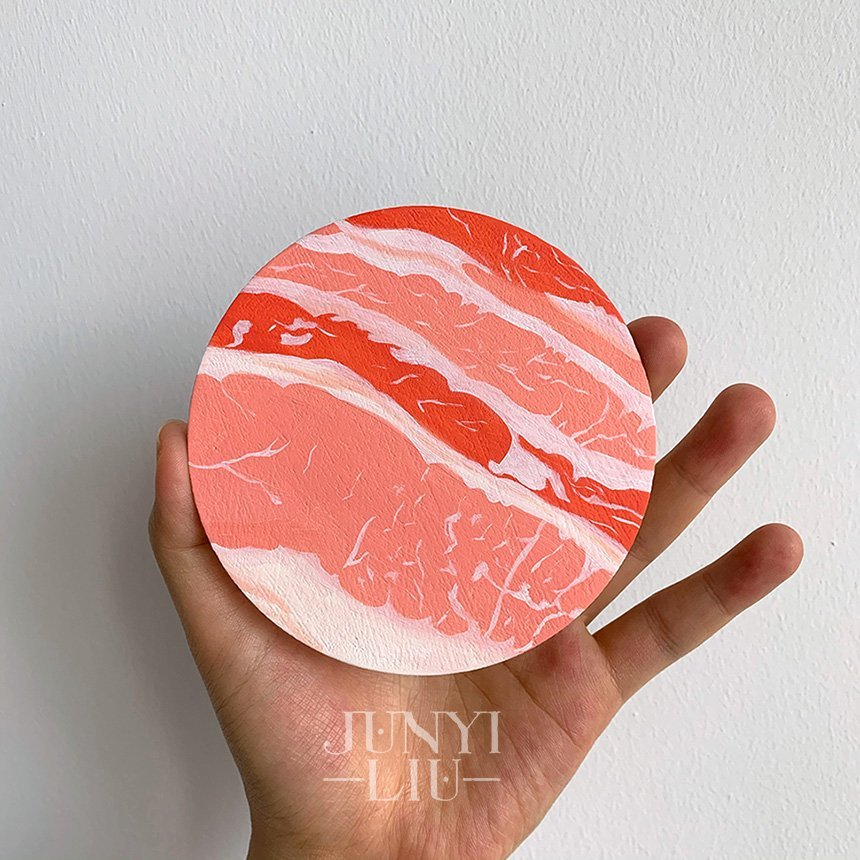“Scarlet Reckoning”
“Scarlet Reckoning” series present whimsical and theatrical scenes featuring beautiful young women in dresses reminiscent of Victorian dolls, alongside handsome princes and counts, the traditional protagonists of fairy tales. However, unlike traditional fairy tales where women are awarded to men in the end, the stories take a different turn. The men, who thought they had everything under control, did not realize the seeds of their downfall were already planted before they even stepped on stage. Though the viewers can pick up hints about the direction of the story from objects in the scenes, those men seem to miss the signs. As the story unfolds, they are surprised by the strength and violence within the seemingly fragile and innocent-looking female characters. The stories presented in the series are not literal, but rather symbolic. The identical hairstyles of the women suggest that they are not isolated individuals, but a collective consciousness possessing all-knowingness and awareness of the play’s script. Defying traditional storytelling, they act as judges of the men's past, present, and future. The three stories, set in a fictional space and time, representing women's fantasies of justice and retribution.
“Killing Me Softly”
“Killing Me Softy” series reveals the complex psychology of people who found themselves in toxic relationships. She painted scenes of young women interacting with sweet foods, sometimes in a puzzling way. Once given the key that sweets are a metaphor for toxic relationships, it is easy for the viewer to comprehend the latent meaning of those interactions. The most obvious similarity of them is the addictive quality. Toxic relationships bring satisfaction and euphoria, while harming the more vulnerable person emotionally, psychologically, and/or physically. Attempts to leave the relationships often fail due to the psychological dependence developed overtime. Junyi has been in multiple toxic relationships, and unfortunately her mental illness has made her an easier target for people with toxic traits. She chose to express the fear, frustration, and ambivalence she experienced through artistic romanticization. The usage of rich, harmonious colors is consistent throughout all the paintings, while the characters within engage in activities that suggest mental instability or even suicide ideation. Each painting was titled with a quote commonly-heard from the abusers, such as “Stop being so dramatic” . The portraitures, appetizing sweets, and bright colors serve as a disguise for the underlying cruel sufferance the characters endure.

